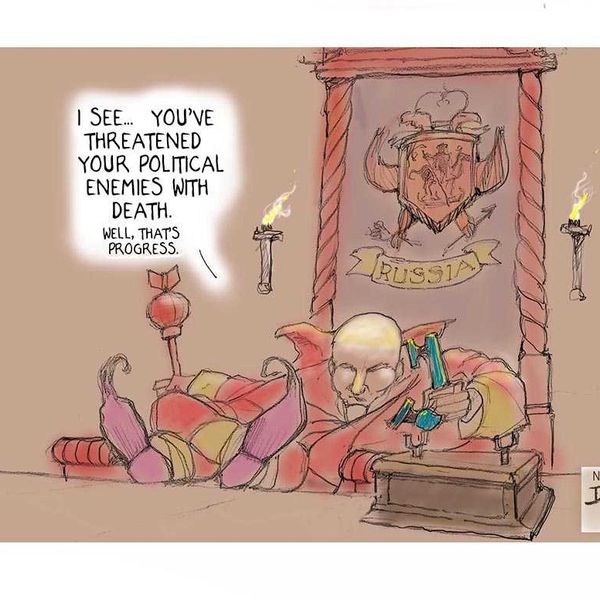Texas already had one of the most gerrymandered congressional maps in the country. Now, under pressure from President Donald Trump, state Republicans are trying to go even further by proposing a map that could hand them up to five more seats.
The first draft of the new map, released on July 30, hasn’t been discussed by lawmakers and is expected to change before final approval. However, the goal is clear: to dilute the voting influence of voters of color, who predominantly support Democrats.
But new polling finds that Republicans are operating in the face of widespread public opposition. Nearly seven in 10 Americans believe it should be illegal to draw maps that make it harder for a political party to win seats in elections, according to YouGov. Even more—74%—oppose drawing maps to reduce the voting power of a specific racial group.
The proposed Texas map would do both. It divides voters of color in Tarrant County (located in the North Central part of Texas) across several Republican-controlled districts. It also significantly redraws Central Texas’s 35th District, which a court forced the state to create to protect minority voting rights. The new boundaries not only ignore that ruling but are also designed to eliminate communities of interest.
The map is just one part of a nationwide redistricting fight. Republican-led legislatures are under pressure from Trump to further distort their maps in favor of the GOP before the 2026 midterm elections. What happens in Texas could serve as the national model.
As such, the fight in Texas has been escalating rapidly.
Democrats recently walked out of the legislature, blocking Republicans from reaching the quorum needed to move the bill forward. As of Friday, the map had not progressed in the legislature, despite threats of arrest, expulsion, and FBI involvement from Gov. Greg Abbott and other GOP leaders. This past Wednesday, Texas Democrats’ temporary hideout in Illinois was targeted with a bomb threat.
Despite the drama, the walkout isn’t without precedent. Democrats fled the state in 2003 to block a similar Republican redistricting plan. They did it again in 2021 to protest a voter-suppression law that eventually passed and empowered partisan poll watchers, criminalized certain election activities, and banned local officials from sending unsolicited mail-in ballot applications, even to seniors who automatically qualify, among other actions.
But this moment feels different. Democrats are not just opposing a map but also highlighting a structural imbalance that voters are increasingly aware of. When YouGov asked Americans about Texas’s current legislative lines, 47 percent said they’ve been drawn to benefit Republicans in the state. Notably, that number was only 21 percent for Wisconsin, another heavily gerrymandered state, where Democrats regularly win statewide but hold just two of eight congressional seats.
Meanwhile, a substantial majority of Americans—67%—don’t want lines in their state to unfairly benefit either party. And nearly 60% said in another recent YouGov survey that they’d rather see redistricting handled by nonpartisan commissions, not politicians.
Public opinion may be shifting, but Republicans in Austin aren’t budging. So far, the party has shown zero interest in negotiating. If anything, they could double down with an even more aggressive redraw once the walkout ends. Abbott, for his part, could also call a series of special sessions until the bill passes—a tactic he’s used before.
Unlike other states, Republicans control both chambers of Texas’ legislature as well as the governor’s office. That makes this walkout more of a speed bump than a blockade.
Still, for now, Democrats have some leverage. The longer the walkout lasts, the more attention they bring to the GOP’s brazen power grab. They’re hoping national outrage can help fuel a broader movement against gerrymandering.
“I don’t think [Trump’s] planning on those five seats alone,” Justin Levitt, a law professor at Loyola Marymount University, told Daily Kos. “At this point, the president is staring at historic unpopularity and having to sell a historically unpopular signature piece of legislation, while the very normal midterm waves tend to go against the party of the president. He is petrified at losing control of Congress, and it’s much more than the normal petrified because of him. He knows it’s going to come with oversight, with investigations, and stop his passage of what’s been a historically unpopular public program.”
While Republicans may think the map guarantees them gains, it’s far from a slam dunk. In the right electoral environment—say, with an unpopular GOP figure at the top of the ticket—a gerrymandered district could backfire.
“I have seen partisan gerrymanders that slice a party’s own support so thin that they end up losing at the polls rather than winning,” Levitt said. “In a wave year, one of the ways that you effectuate a partisan gerrymander, usually, is you take existing districts that are quite safe and you move supporters from that district into another. And it is entirely possible to get so greedy that you cut the margin so small that the safe districts are no longer, and then, in a wave year, the other party wins.”
There is precedent for this. In 2018, Democrat Kendra Horn won a House seat in Oklahoma that Trump had won by over 13 percentage points just two years earlier. It was one of the few times a candidate flipped a district that political prognosticators had considered to be basically a lock for the other party—and it’s a warning to Republicans pushing too far.
But even if overreach costs the GOP some seats, the bigger issue is the erosion of trust in democracy. YouGov found that about a third of Americans are unsure whether their own state’s legislative lines are fairly drawn, and another 35% see their state’s lines as drawn unfairly—two signs that confidence in the process is slipping.
That’s what Texas Democrats are betting on: that the public recognizes the power grab and demands change.
“Gerrymandering is terrible and should be banned. And every Democrat in Congress right now is a sponsor of the John Lewis Voting Rights Act to ban gerrymandering nationwide,” Texas Rep. Greg Casar, a progressive whose district would be redrawn to favor Republicans, told NPR on Wednesday. “But what we need to be really concerned about and what I’m sick and tired of is Democrats playing by one set of rules and then Republicans gerrymandering.”
Absent federal action, that’s exactly what Republicans will keep doing. State lawmakers face virtually no constraints—and in states like Texas, where a single party controls all of state government, the temptation to rig the rules is too powerful to resist.
Ultimately, the crisis in Texas is about more than five districts. It’s a preview of a nationwide battle over how political power is allocated—and who gets to wield it.
Reprinted with permission from Daily Kos.











